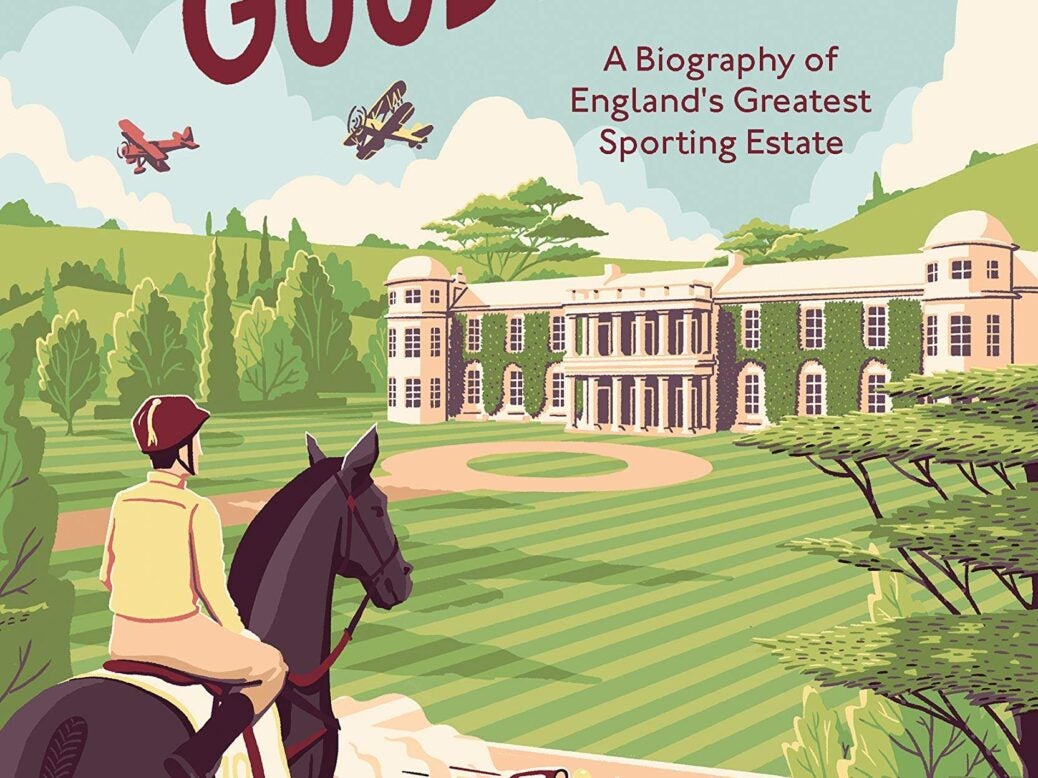
A history of the 11 Dukes of Richmond reveals a long and proud tradition of sporting patronage, writes Christopher Silvester
Glorious Goodwood A Biography of England’s Greatest Sporting Estate by James Peill
The 1st Duke of Richmond & Lennox (in its current creation) was the bastard son of Charles II by his chubby Breton mistress Louise de Kérouaille, whom the king would write to as ‘my dearest Fubbs’ – he even named a royal yacht Fubbs. This matriarch, who outlived her son, laid the foundations of the ducal fortune, securing an income and land from Charles and the French king alike.
She would keep Louis XIV informed about goings-on at the Stuart court, in return for which she was granted the duchy of Aubigny to boot. The 1st Duke, the first in a line of ten Charleses and one Frederick, rented and later bought Goodwood in Sussex as a hunting lodge for its proximity to the fashionable Charlton Hunt.
He made it his ducal seat and established the tradition of military service, loyalty to the Crown, and lusty sporting activity that has served the family so well down the centuries. ‘He did not have the monetary resources of a royal prince, but he behaved as if he did,’ notes Peill, who is curator of the Goodwood Collection.
One famous occasion in the annals of the Charlton Hunt, in 1734, became known as ‘The Grand Chase’ because it covered 57 miles and lasted ten hours. Richmond had his men measure the route with a cartwheel, which took two days. Although the Charlton had its own hunting lodge and banqueting hall, some of the illustrious members, who included the leading political, social, and military men of their day, would stay at Goodwood.
The 2nd Duke was a keen cricketer, and indeed the first ‘articles’ or laws of the sport were codified at Goodwood. He also created a menagerie of wild animals, built a hilltop pavilion called Carné’s Seat as a banqueting hall, cultivated a garden of exotic plants, and planted many trees, including the Everlasting Cedars of Lebanon. He also commissioned many wonderful paintings from Italian masters such as Canaletto.
A leading Whig peer and the longest-serving Master of the Horse of the 18th century, he commanded the cavalry in the campaign to put down the Jacobite rebellion of 1745.
The 3rd Duke built a royal or ‘real’ tennis court and turned the menagerie into a pheasantry. When he was not hunting or playing tennis, he was shooting or riding. He expanded the stables, which housed 54 horses by the end of the century. Otherwise, he was known as ‘the Radical Duke’ for his support of the Whigs and the American colonists against George III, although he later joined the Tories under Pitt the Younger.
For many years he served as Master-General of the Ordnance, in which capacity he planned the construction of fortified coastal towers, championed map-making, and introduced high-speed troops of horse artillery.
The king finally concluded that ‘there was no man in his dominions by whom he had been so much offended, and no man to whom he was so much indebted, as the Duke of Richmond’. After military service in Ireland, the 4th Duke revived the Goodwood Cricket Club. He took his family off to Brussels during the campaign that culminated in the Battle of Waterloo, and it was the Duchess’s ball that was famously interrupted by the news that Napoleon had stolen a march on Wellington.
He was responsible for the quaint Goodwood custom whereby from 1784 to 1921 all family members and guests were weighed before and after dinner and the amounts recorded in weighing books.
It was the 5th Duke who was responsible for ‘Glorious Goodwood’. He entertained lavishly there and built a grand ballroom, but it was as the creator of the Goodwood racecourse for which he is best remembered. His son, Lord George, invented the horse box and thereby revolutionised horse racing by making it possible to transport horses to many more meetings around the country. In Parliament, the 5th Duke was considered likeable and goodhumoured, but at the same time prejudiced and ignorant. He was also notoriously succinct.
One retainer who had received a two-word letter from him bet John Kent that he had received the shortest letter in existence, but then Kent produced one that simply read: ‘Kent – Yes. Richmond.’
The 6th Duke, who acquired an additional Scottish title as the first Duke of Gordon, favoured field sports most of all, but rode several winners at Goodwood. A golf course was created at the estate during the 7th Duke’s time. The 8th Duke lost his eldest son in Russia during the Great War and had to start selling off some of his land holdings to pay taxes.
Freddy, the 9th Duke, shocked his father by going into trade as a Bentley salesman, won a major motor race at Brooklands in 1931, was a team manager, designed sports car bodies, and learnt to fly.
After World War II, during which Goodwood was requisitioned as an RAF emergency landing ground, he welcomed motor racing to the estate in 1948. ‘Goodwood became the spiritual successor to Brooklands as the home of British motor racing,’ writes Peill.
The 10th Duke trained as a chartered accountant, which stood the estate in good stead when it had to face the punitive taxation and inflation of the 1970s, but he also introduced a new sport to Goodwood – dressage and dressage to music, which later became an Olympic sport.
The 11th and current Duke created the Festival of Speed in 1993, featuring a hill-climb for motor cars, which now draws crowds of 200,000, and since 1998 has hosted the Goodwood Revival, an exhibition of classic cars from the period 1948-66. Louise de Kerouaille is not the only formidable woman in this story.
Sarah, the 2nd Duchess, was pregnant 27 times and gave birth to 12 babies, of whom seven survived infancy. The 4th Duchess had 14 children and the 5th Duchess had ten. Aunt Lina served as a mother figure to the 7th Duke’s seven children after he was twice widowed. She was a ‘true Victorian spinster, superbly erect in shape and mind’, according to the 9th Duke.
The dukes and duchesses were passionate for their sports, but ‘what sets Goodwood apart from many other sporting estates,’ writes Peill, ‘is the generosity of sharing those passions with others – friends and strangers alike.’
Peill now shares with us this richly anecdotal and quintessentially English saga.
Read more
Hilary Mantel Q & A: ‘I’ve started to regard Cromwell as a colleague’
William Cash: How the society literary festival is being revived
Why are we so averse to verse?








